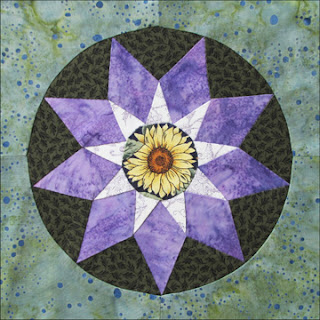I have several friends who do wonderful things with used clothing.
Nifty Quilts, quilt made of 70's fabrics
See Nifty's blog here:
Buffy, Huipil Quilt
Quilt with a center made from used Guatemalan clothing, a huipil.
For Brian by Deb Rowden
See Deb's take on the upside of the obesity epidemic here:
The history of recycling fabrics and clothes is a long, yet strangely familiar story.
See a post I did about buying used fabric here:
http://barbarabrackman.blogspot.com/2013/08/fabric-retailing-rag-fair.html
http://barbarabrackman.blogspot.com/2013/08/fabric-retailing-rag-fair.html
The other part of the story is selling used goods. Where did the Rag Fair and the Used Clothing Shops get their goods?
In 1864 towards the end of the American Civil War, Confederate Mary Boykin
Chesnut was wearing rather shabby mourning, "such things as I have would
not have been thought fit for a chamber-maid." She no longer needed her
brighter dresses and she needed money.
An unknown woman in mourning during the Civil War
"March 18th.—Went out to sell some of my colored dresses.
What a scene it was—such piles of rubbish, and mixed up with it, such splendid
Parisian silks and satins. A mulatto woman kept the shop under a roof in an
out-of-the-way old house. The ci-devant [once] rich white women sell to, and
the negroes buy of, this woman."
Wardrobe Dealer:
He bought/he sold.
In her book Fashion's
Favourite: The Cotton Trade and the Consumer in Britain, 1660-1800, Beverly Lemire tracked the market, noting a 1740 English ad offering to barter crockery in exchange for used clothing. A dozen years earlier Mr. & Mrs. James Varlow's occupations were described. He gathered rags and his wife sold Manchester ware (new British-produced fabrics)---an excellent partnership.
Lemire lists sources for the used clothing markets. Tailors, who might barter with their customers, sold the used clothing of the well-to-do; thieves sold stolen clothing; pawnbrokers sold unretrieved items given as collateral for loans. Many households listened for the call of the peddler who came through the neighborhood offering to buy used clothing (and worn-out quilts, we can imagine.) And then there were what we might call estate sales---the public vendue.
In 1776, Philadelphian William Adcock sold a
"great variety of goods suitable for the season."
Vendues might be the estate of one deceased person,
one bankrupt family or a regular public auction
of new and used items.
Everything had a value. Boots and shoes were recycled to make mineral dyes. Rags too worn to wear went to make rag paper. And slightly worn and slightly unfashionable clothes descended the ladder of social class.
During the Great Depression the government documented poverty.
Here is an Iowa family described as living in dire poverty---an example of how much for granted
we have taken an excess of clothing in the U.S. for well over a hundred years. Even cash-poor families have an excess of clothing.
(Living in a similar house, I might also guess it's a lack of closets rather than a lack of money that causes things to pile up in such fashion.)
As the industrial revolution made clothing cheaper and more commonplace, excess clothing moved briskly around the local market.
An Old Clothes Shop, Seven Dials, London
About 1878
John Thomson (1837-1921)
See the rest of this great photo of a used clothing dealer in the collection of the Victoria & Albert Museum here:
The Ohio quilt project book, Quilts in Community, noted an 1870 discussion of the economies of patchwork and rags in the Western Rural magazine. Apparently a letter-writer labeled patchwork a waste of time. "Hass" wrote her two-cents worth:
"Patchwork Quilts-Tied Comfortables
Nothing...is neater in my opinion than a neat scrap quilt to
say nothing of economy...I save every scrap left over from my dresses &
aprons...If we sold them for paper rags we could get only 2 cents a pound,
while at the very least we would pay 12-1/2 c a yard for calico to make
comfortables."
While selling and buying used goods might be something polite people didn't ordinarily discuss, war-time fabric shortages and other disasters periodically made the whole idea patriotic and worth bragging about.
Above and below from the Library of Congress
During World War II it was called scrap collecting.
The Library of
Congress has many pictures of the workings
of a WW II
recycling center.
Go to their web page and search for
Scrap salvage.
Used American clothing often winds
up in countries like Myanmar.
The wheel of textile recycling is international today. We buy and sell at garage sales, consignment and thrift shops. Charities sort and grade our donations, selling the higher-end clothing back to us with the lower-end goods shipped to other countries. Low-grade textiles are recycled as rags for industry or fiber for new products.
Unless Buffy or Rosie get there first...
Thrift Shop Star by Buffy
.
Hawaiian Shirts by Rosie Mayhew

























































